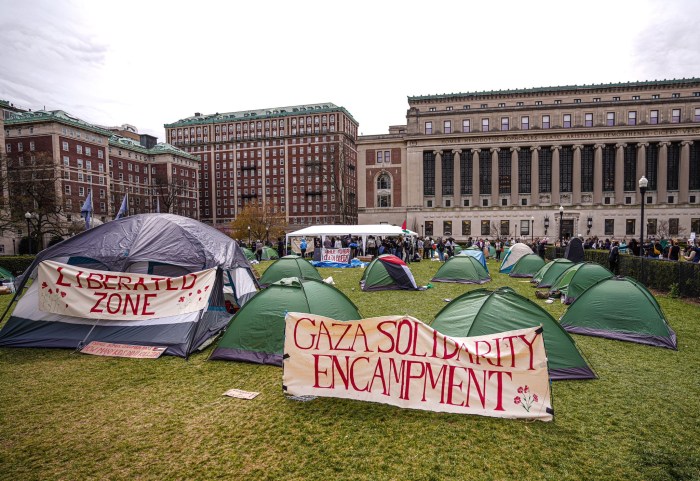By Juan Soto
Years ago Prospect Cemetery, the oldest in Queens and one of the oldest in the city, was covered with vegetation, trees, vines and debris. Its tombstones were toppled and damaged.
The Jamaica site that is the burial ground for Revolutionary War soldiers, such as Egbert Benson and Elias Carpenter, and for some of the borough’s most prominent families, like Van Wyck and Sutphin, was hidden in plain sight.
To prevent the historic cemetery from deteriorating even more, the Greater Jamaica Development Corp., the Prospect Cemetery Association and the New York Landmarks Conservancy, a nonprofit organization, came together in 1999 to design a project meant to revitalize the sacred ground.
Now, after renovations that included the removal of the vegetation and the restoration of the on-site vacant Chapel of the Sisters, a group of volunteers and workers from Brooklyn’s Green-Wood Cemetery are repairing dozens of the toppled headstones.
“This is very interesting,” said volunteer Luci Cooke, 19, a college student from Brown University. “It’s actually excellent because I recognized some of the names in the tombstones.”
Cooke was working alongside Vivian Normant and Ali Dore, two of the five students visiting from France and helping in the project through an exchange program sponsored by Preservation Volunteers.
They were restoring the tombstone of Angeline Cornwell, who died in 1908 at age 78.
“This is a very good experience,” said Dore. “The work is hard, but I like it.”
Normant was an English teacher in France, but now she is getting her B.A. in art history back home to teach art to high school students.
“I love the work that is being done,” she said. “We are touching a part of history.”
The group, which includes students from Williamsburg High School for Architecture and Design, has restored about 50 damaged headstones. The project will also relandscape the grounds and institute an interpretative history of the place.
The colonial burial ground, next to the York College campus, dates back to 1660.
“These places are important,” Peg Breen, president of the New York Landmarks Conservancy, said at the burial ground. “It gives you a perspective of how old New York City is.”
Because it was abandoned, people did not know the cemetery even existed. Thousands of students pass by it every day.
Andrew Farren, of the Prospect Cemetery Association, said the first documented burial that took place at the site was in 1709. He pointed out at the colonial burial ground that before work began, “homeless people lived here.” He added that there were also acts of vandalism.
“We also hope to find new tombstones once we penetrate the ground with a sonar,” explained Farren, whose grandfather from eight generations ago was buried at Prospect Cemetery in 1723. His great-grandmother was interred there in 1951.
He said the association, historians and experts have been able to identify over the years approximately 1,900 burials, that spanned from 1709-1981.
Richard Moylan, president of Green-Wood, said that “with its rich, 346-year history and picturesque tombstones, Prospect Cemetery is an important part of the New York landscape.”
After putting the finishing touches on another tombstone, the French student Ali Dore, took a deep breath, paused and said: “Restoration is such a good experience. It does not feel weird at all to do this in a cemetery.”
Reach reporter Juan Soto by e-mail at jsoto@cnglocal.com or by phone at 718-260-4564.
































